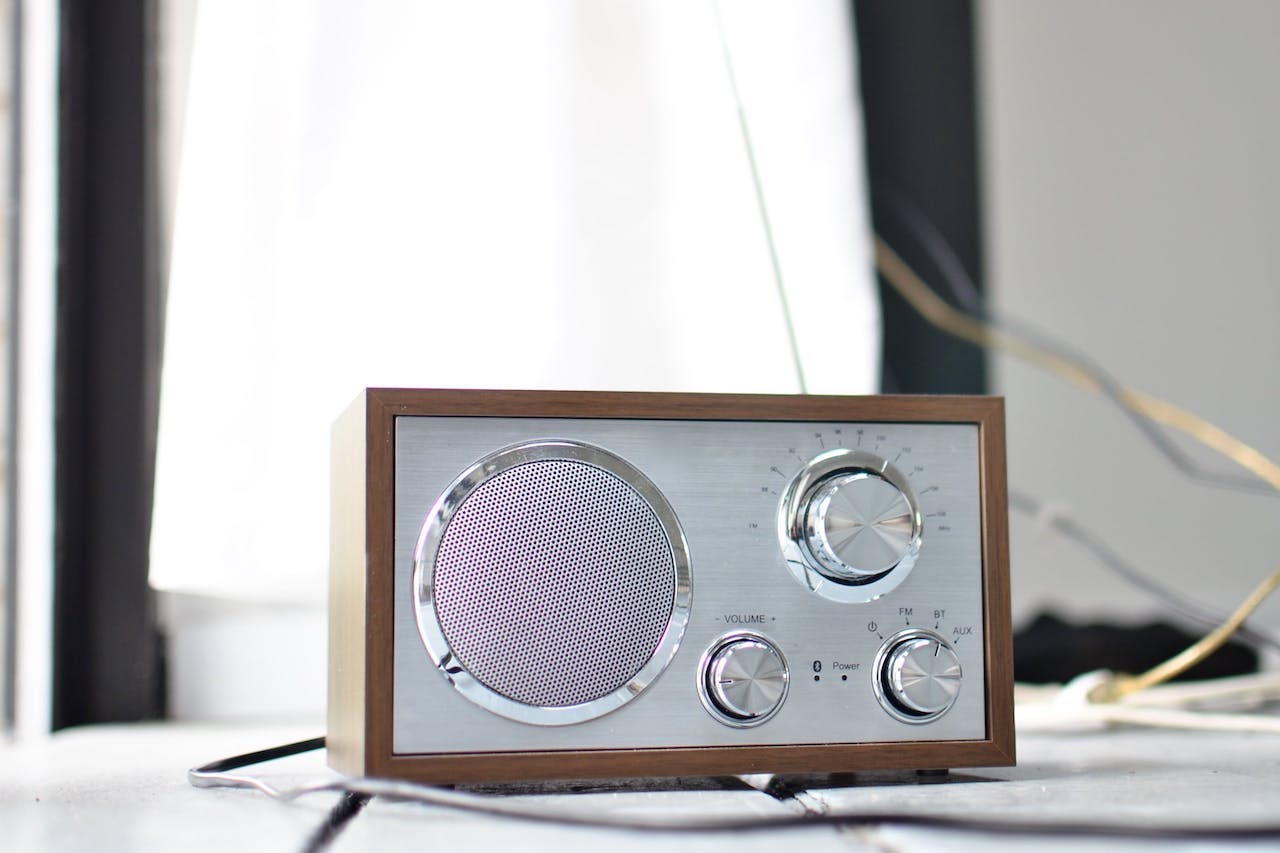- HOME
- Infrared Sauna Benefits
- Aromatherapy Safety Guide
Aromatherapy for Infrared Sauna: Science, Safety and Blends
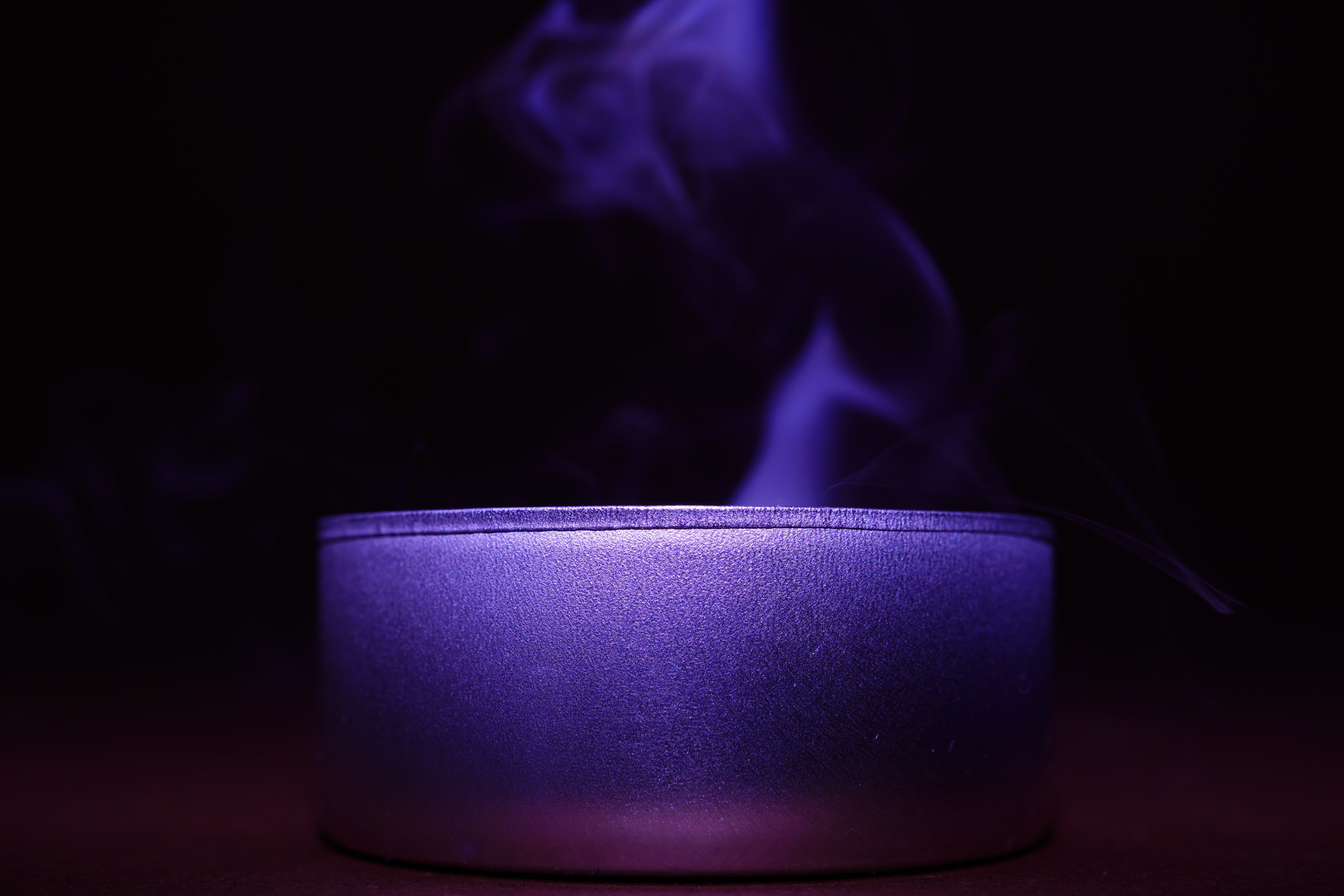
Infrared saunas and aromatherapy work together to make each session more restorative. Essential oils can calm the mind, ease breathing, soothe sore muscles, or sharpen focus depending on the blend you choose. Clinical studies have found that essential oils can have antimicrobial, anti-inflammatory, antioxidant, and mood-altering effects, though some may also carry risks such as skin irritation or hormonal impact [1].
Because of this, it’s important to use essential oils thoughtfully and safely to get the benefits without unwanted side effects. This guide explains how to combine aromatherapy with your infrared sauna safely, including the best ways to use oils and key risks to avoid.
First, we’ll cover the main benefits of using essential oils in your sauna. Then, we’ll explore the science behind how heat and scent work together to deepen those effects.
A quick tour of the guide:
- Infrared sauna aromatherapy benefits
- The science behind combining aromatherapy and infrared heat
- Infrared sauna diffuser & oil application methods
- Safe essential oils for sauna: Risks & precautions
- Infrared sauna essential oil recipes & blends
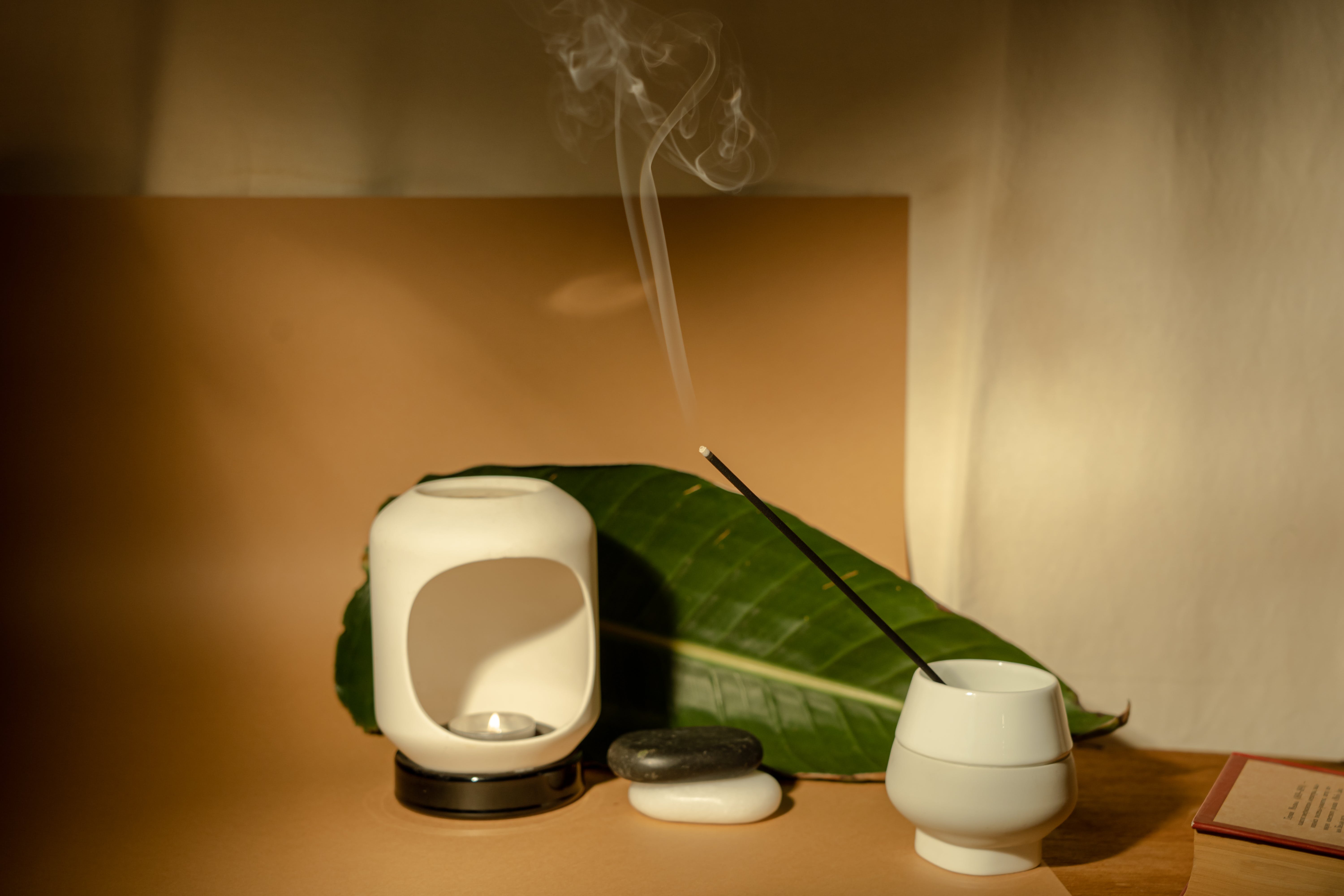
Infrared Sauna Aromatherapy Benefits
Aromatherapy can help with relaxation, ease muscle tension, improve breathing, lift mood, and maintain skin and immune health during your infrared sauna session. Ongoing clinical research is examining how aromatherapy may aid pain relief, sleep quality, and mood regulation, adding scientific backing to traditional uses [2].
Here is a list of some main benefits and common uses of essential oils in the sauna:
🔹 Relaxation and stress relief: Lavender, chamomile, sandalwood, and bergamot calm the mind and ease tension. For stress reduction oils, lavender and bergamot are clinically proven to lower cortisol (see science section).
🔹 Respiratory health: Eucalyptus, citrus, tea tree, and peppermint clear congestion and improve breathing.
🔹 Muscle pain and inflammation: Eucalyptus, peppermint, birch, and lavender relieve soreness and reduce inflammation.
🔹 Mood and mental clarity: Sandalwood, peppermint, lemon, and vetiver sharpen focus and lift mood.
🔹 Immune system: Frankincense, tea tree, and lavender help keep the immune system functioning well.
🔹 Skin health: Cedarwood, patchouli, and birch contribute to healthier skin condition and appearance.
For more detail, see our blog post: The Best Essential Oils To Use In Your Infrared Sauna.

For added effects, combine aromatherapy with PEMF therapy. Use the TherAroma diffuser during PEMF mat sessions for a portable wellness setup.
The Science Behind Combining Aromatherapy and Infrared Heat
Infrared saunas warm tissue deeply at lower temperatures than traditional saunas [3]. When combined with aromatherapy, this heat raises scent sensitivity and skin absorption, which can increase how much essential oils affect the body.
Together, heat and essential oils prompt overlapping physiological responses: heat triggers neuroendocrine activity, while oils interact with brain receptors, which may lower stress hormones, improve blood flow, and help with breathing and detoxification.
Clinical studies show several effects, including:
🔹 Lavender may lower cortisol levels and lift mood in people experiencing stress, making it one of the effective cortisol reduction sauna oils [4].
🔹 Chamomile has helped some insomnia patients achieve better sleep quality [5].
🔹 Eucalyptus may relieve respiratory symptoms by clearing airways and calming inflammation [6].
🔹 Birch oil contains substances that ease pain and inflammation, especially in arthritis [7].
New clinical research into aromatherapy for infrared sauna use confirms synergistic effects between heat and volatile oil compounds, increasing therapeutic outcomes. Early research points to tea tree and cinnamon oils combined with heat therapy influencing immune responses and metabolism, though further studies are needed [8, 9].
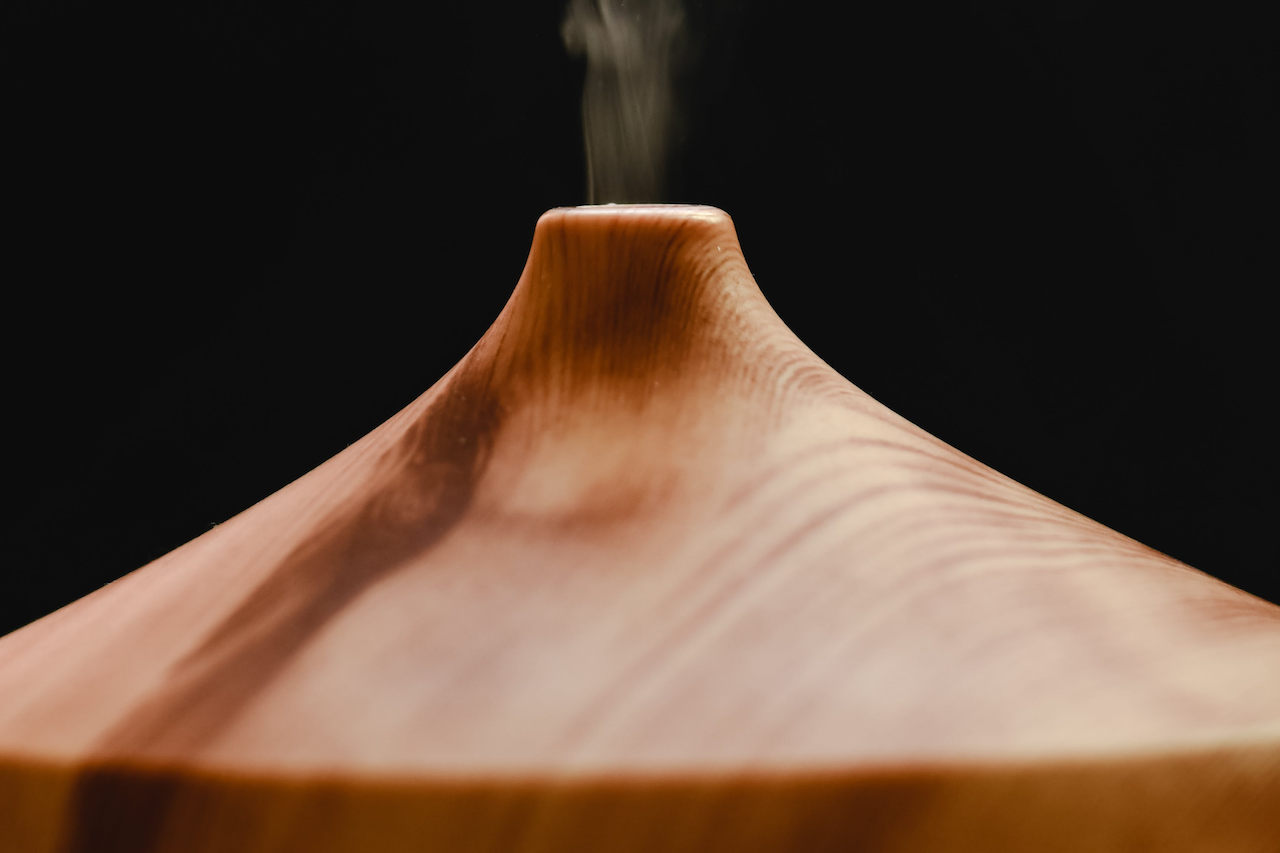
Infrared Sauna Diffuser & Oil Application Methods
Essential oils should always be diluted or applied carefully in saunas to avoid skin irritation or damage to sauna equipment. Here are five safe ways to use aromatherapy during your sauna sessions.
Ultrasonic and Nebulizing Diffusion (optimal)
Ultrasonic diffusers use vibrations to mix essential oils with water, creating a fine mist that spreads aroma evenly through the sauna air. Add 3–5 drops of oil to the water reservoir and avoid overheating plastic parts. Some sauna manufacturers sell ultrasonic diffusers made to work safely with their models.
Nebulizing diffusers, like the TherAroma Portable Atomizer, don’t use water or heat. They convert pure essential oils into micro-droplets, delivering a stronger, undiluted scent. These devices are compact, rechargeable, and suitable for use alongside portable infrared saunas or in other settings.
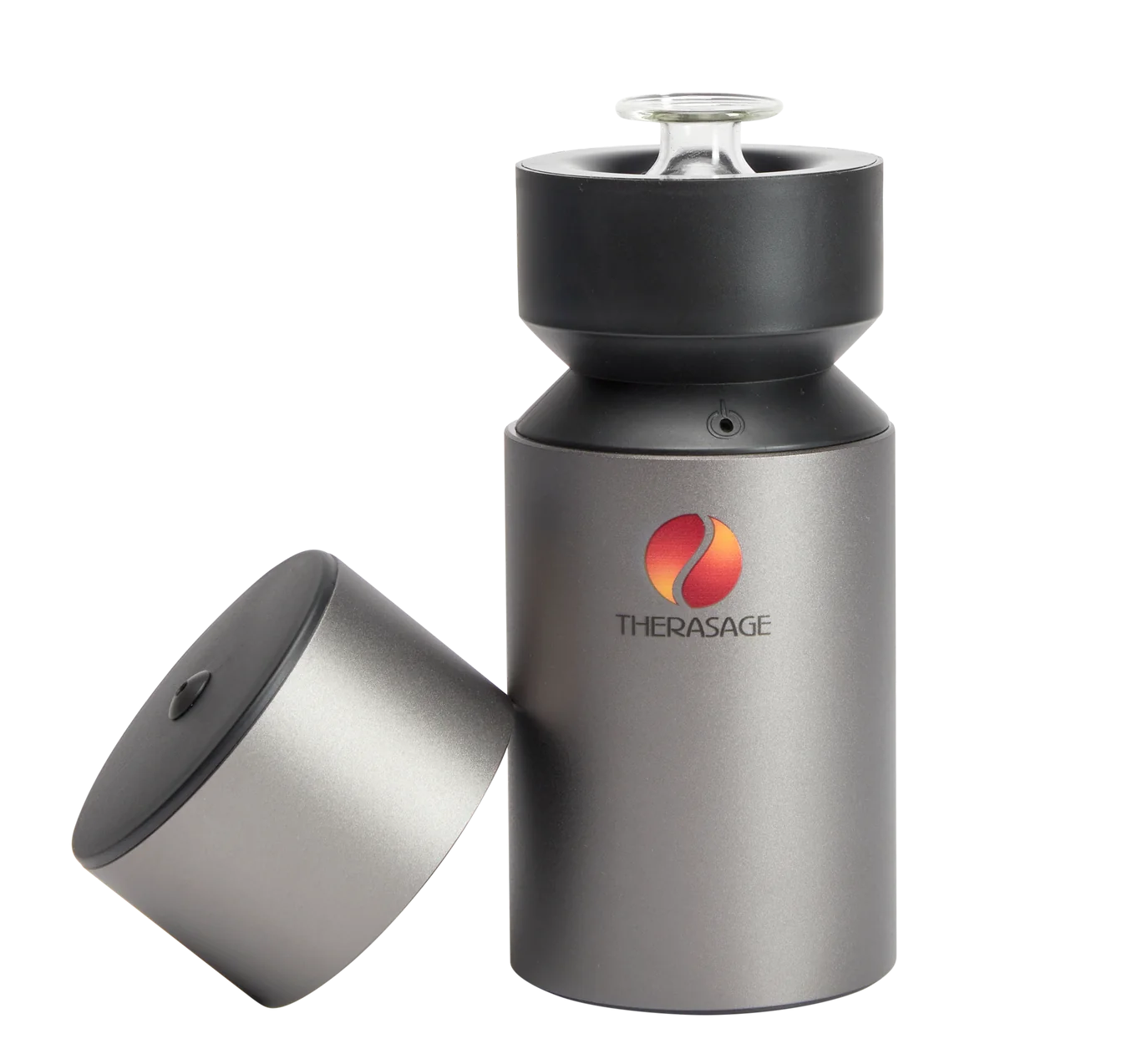
TherAroma - Portable Atomizer - Essential Oil Diffuser
The TherAroma Portable Atomizer is a waterless and wireless essential oil diffuser that uses nebulizing technology to deliver pure undiluted oils as a fine mist. It is compact and rechargeable, designed for cordless use anywhere such as home, office, travel, or with portable infrared saunas. The diffuser features a spill safe glass oil chamber, automatic shut off for safety, and easy maintenance making it an efficient and convenient aromatherapy option.
Key features: 2ml capacity, up to 10 hours runtime, USB rechargeable, aluminum alloy design
$97 at Thera Optimal HealthTherasage products are available at Thera Optimal Health. Use code SAUNACETHERA1 for 10% off.
While we may receive a commission for purchases made through our product links, our reviews are rigorous and grounded in merit, to ensure that our recommendations are honest, unbiased and in the interest of helping you make the best choice.
This portable diffuser works equally well with infrared sauna blankets; simply place it nearby during sessions.

Stone Application
Applying diluted essential oils (about 1 part oil to 10 parts water) on cooler sauna stones allows the scent to release gradually as the stones warm. This prevents the oil from burning and producing harsh smells.
Aroma Spray
Mix essential oils with distilled water and a small amount of vodka or another preservative in a spray bottle. Use this spray to mist the sauna air lightly before your session for a gentle aromatic experience.
Steam Inhalation
Add one drop of essential oil to a damp towel and inhale the steam during rest or cool-down periods. This method delivers the aroma directly to your respiratory system without contact with undiluted oil.
Pre-Sauna Topical Application
Dilute essential oils in a carrier oil such as coconut oil (roughly 1 part oil to 20 parts carrier). Apply the mixture to pulse points before entering the sauna, allowing gradual absorption and aroma release while protecting your skin.
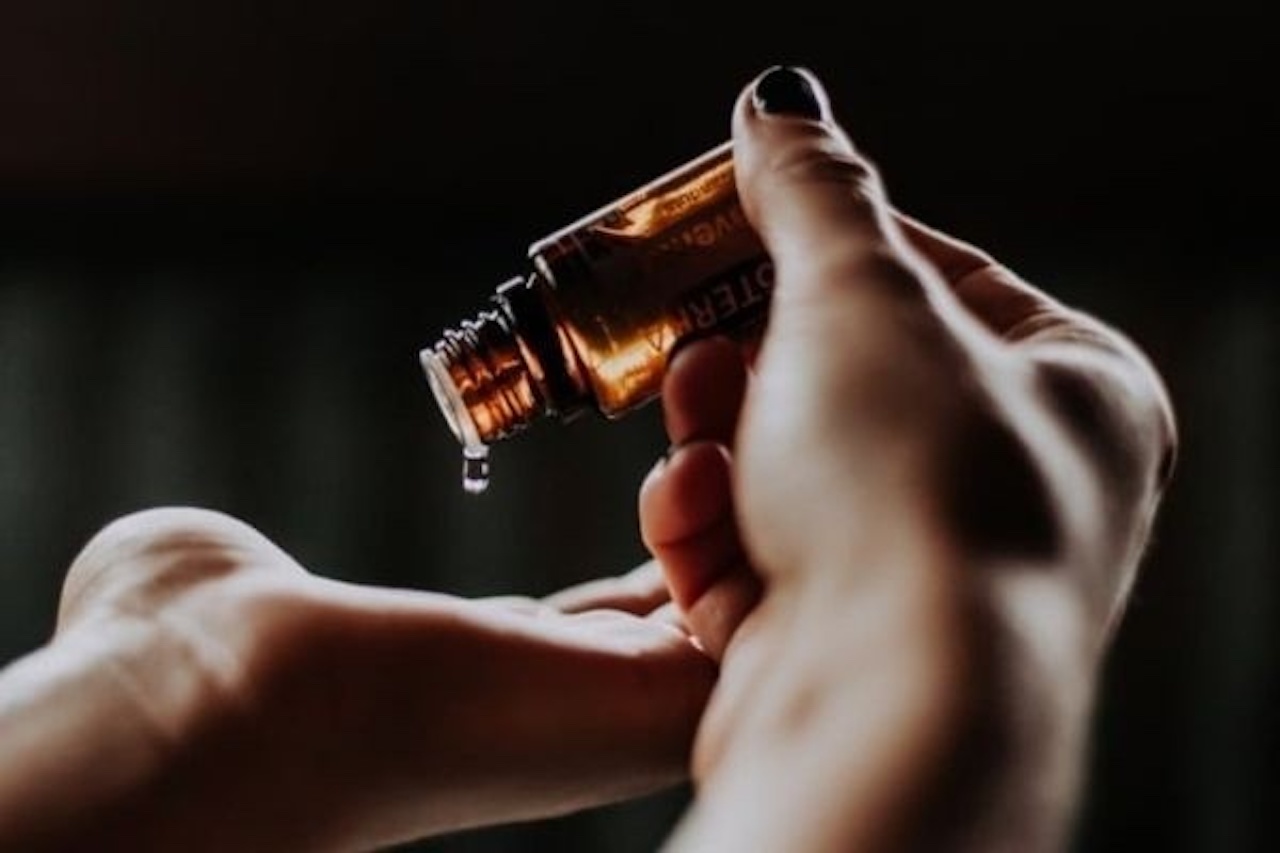
Safe Essential Oils for Sauna: Risks & Precautions
Aromatherapy adds scent to sauna sessions but requires caution to prevent problems.
Heat Effects on Oils and Skin
High sauna temperatures can change essential oils, sometimes causing skin irritation or allergies. Use smaller amounts and avoid oils sensitive to heat. Citrus oils can cause skin reactions when exposed to light and heat and should be avoided before sauna use.
Breathing Concerns
Inhaling strong oils in hot air may irritate lungs or airways. Start with small amounts and choose oils less likely to cause irritation. For infrared sauna congestion, eucalyptus and pine oils are safe choices when diffused.
Applying Oils on Skin
If applying oils, dilute them with a carrier oil and be careful, as heat opens pores and increases skin sensitivity.
Using Portable Diffusers Safely
When using sauna blankets or PEMF mats, position your diffuser (like the TherAroma) on a stable surface nearby, never inside the blanket or mat or directly on heated surfaces. This prevents overheating damage to devices and avoids fire risks from blocked vents.
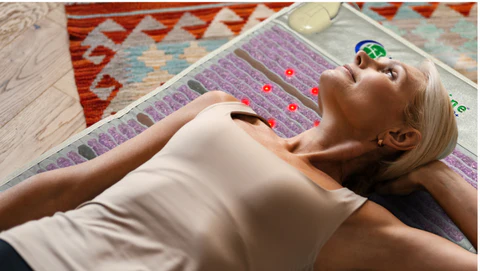
Pair your infrared PEMF mat sessions with aromatherapy for a fuller wellness experience. Place your diffuser nearby to enjoy soothing scents while you relax.
Safe Practices
🔹 Use cordless, heat-resistant diffusers placed away from skin for even scent distribution.
🔹 Mist air or towels with diluted oils to reduce direct skin contact.
🔹 Use infused towels carefully, avoiding direct skin contact if sensitive.
🔹 Clean sauna surfaces regularly to prevent oil buildup.
Health Precautions
🔹 Avoid aromatherapy in sauna if pregnant or talk to a doctor if you have heart or blood pressure concerns.
🔹 Avoid photosensitive oils like citrus before sauna use [10].
🔹 Drink electrolyte water before and after sessions to prevent dehydration and reduce risk of sauna aromatherapy headache.
🔹 Limit sessions to 30 minutes and leave if dizziness, nausea, or headache occur.
🔹 Keep pets away from diffused tea tree, eucalyptus, and citrus oils; these can be toxic.
Frequently Asked Questions
Q: Can essential oils interact with medications?
A: Yes. Oils may affect blood thinners, diuretics, or corticosteroids. Check with your doctor first.
Q: Are there age limits for using sauna oils?
A: Yes. Avoid for children under 6. For ages 6–12, use no more than 1 drop of diluted lavender. Teens should avoid eucalyptus.
Q: Which oils increase sauna risks?
A: Citrus oils (like bergamot, lemon), wintergreen, and cinnamon can raise photosensitivity or irritate airways.
Q: Can you put oils directly on infrared sauna heaters?
A: Never. Use diffusers or stones to disperse oils safely.
Q: Is aromatherapy safe during pregnancy or breastfeeding?
A: Avoid it. Heat and oils may pass to the baby. Limited safety data exists.
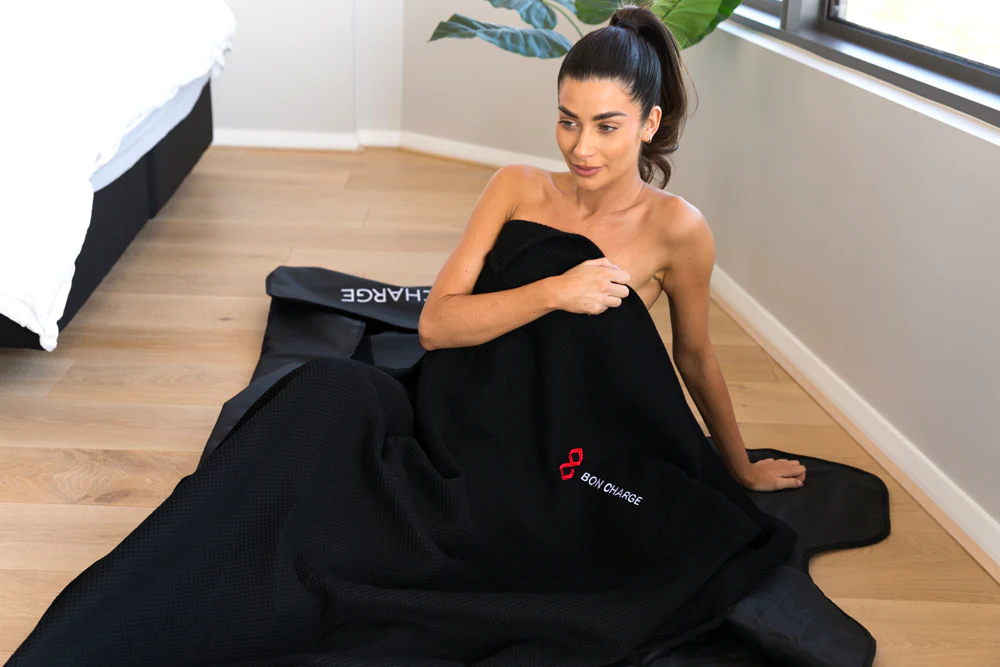
Pair your sauna blanket sessions with carefully crafted essential oil blends. Experience deeper relaxation and detox with every use.
Infrared Sauna Essential Oil Recipes & Blends
These blends feature some of the best essential oils for infrared sauna relaxation and detox. Pro Tip: Use a sauna blanket with aromatherapy for amplified detox. Choosing the right essential oil blend can shape your sauna experience. Below are blends tailored to common goals like detox, muscle recovery, and relaxation. Use 3 to 4 drops total per session to keep scents balanced and safe.
🔹 Deep Detox: Lemon + Juniper Berry + Fennel (2:1:1)
🔹 Muscle Recovery: Birch + Peppermint + Marjoram (3:2:1)
🔹 Respiratory Relief: Eucalyptus + Pine + Tea Tree (3:1:1)
🔹 Pre-Sleep Calm: Lavender + Sandalwood + Bergamot (2:2:1)
For tips on creating your own essential oil blends for sauna use, see our blog post Make Your Own Sauna Essential Oils.
Aromatherapy can add depth to your infrared sauna sessions when used thoughtfully. Choosing the right essential oils and applying them safely helps you enjoy benefits without risks. Keep these tips in mind to make your sauna experience both relaxing and effective.
Saunace.com publishes reviews and usage guides for infrared and PEMF devices to help readers compare options and use them safely; see the About page to learn how we research and evaluate products.

Diane Sargent
Updated: August 2025
Excited to add aromatherapy to your sauna experience? Then you might find the following articles of interest as well.
References
1. Brennan SE, McDonald S, Murano M, McKenzie JE. Effectiveness of aromatherapy for prevention or treatment of disease, medical or preclinical conditions, and injury: protocol for a systematic review and meta-analysis. Syst Rev. 2022 Jul 26;11(1):148. https://pmc.ncbi.nlm.nih.gov/articles/PMC9317467/
2. M Lis-Balchin, Essential Oils and 'Aromatherapy': Their Modern Role in Healing, PubMed, https://pubmed.ncbi.nlm.nih.gov/9519666/
3. Mayo Clinic. (2024, September 13). Do infrared saunas have any health benefits? Mayo Clinic. https://www.mayoclinic.org/healthy-lifestyle/consumer-health/expert-answers/infrared-sauna/faq-20057954
4. Yoo O, Park SA. Anxiety-Reducing Effects of Lavender Essential Oil Inhalation: A Systematic Review. Healthcare (Basel). 2023 Nov 17;11(22):2978. https://pmc.ncbi.nlm.nih.gov/articles/PMC10671255/
5. Deepa Y, Vijay A, Nivethitha L, Nandhakumar G, Sathiya S, Mooventhan A. Effects of chamomile oil inhalation on sleep quality in young adults with insomnia: A randomized controlled trial. Int J Psychiatry Med. 2025 Sep;60(5):533-542. https://pubmed.ncbi.nlm.nih.gov/39545336/
6. Horváth G, Ács K. Essential oils in the treatment of respiratory tract diseases highlighting their role in bacterial infections and their anti-inflammatory action: a review. Flavour Fragr J. 2015 Sep;30(5):331-341. https://pmc.ncbi.nlm.nih.gov/articles/PMC7163989/
7. Xin W, et al.. Methyl salicylate lactoside inhibits inflammatory response of fibroblast-like synoviocytes and joint destruction in collagen-induced arthritis in mice. Br J Pharmacol. 2014 Jul;171(14):3526-38. https://pmc.ncbi.nlm.nih.gov/articles/PMC4105938/
8. Hammer KA, Carson CF, Riley TV. Effects of Melaleuca alternifolia (tea tree) essential oil and the major monoterpene component terpinen-4-ol on the development of single- and multistep antibiotic resistance and antimicrobial susceptibility. Antimicrob Agents Chemother. 2012 Feb;56(2):909-15. https://pmc.ncbi.nlm.nih.gov/articles/PMC3264233/
9. Qin B, Panickar KS, Anderson RA. Cinnamon: potential role in the prevention of insulin resistance, metabolic syndrome, and type 2 diabetes. J Diabetes Sci Technol. 2010 May 1;4(3):685-93. https://pmc.ncbi.nlm.nih.gov/articles/PMC2901047/
10. American College of Healthcare Sciences, Essential Oil Safety: What is Photosensitivity? Achs.Edu, https://achs.edu/blog/what-is-photosensitivity-with-essential-oils/

